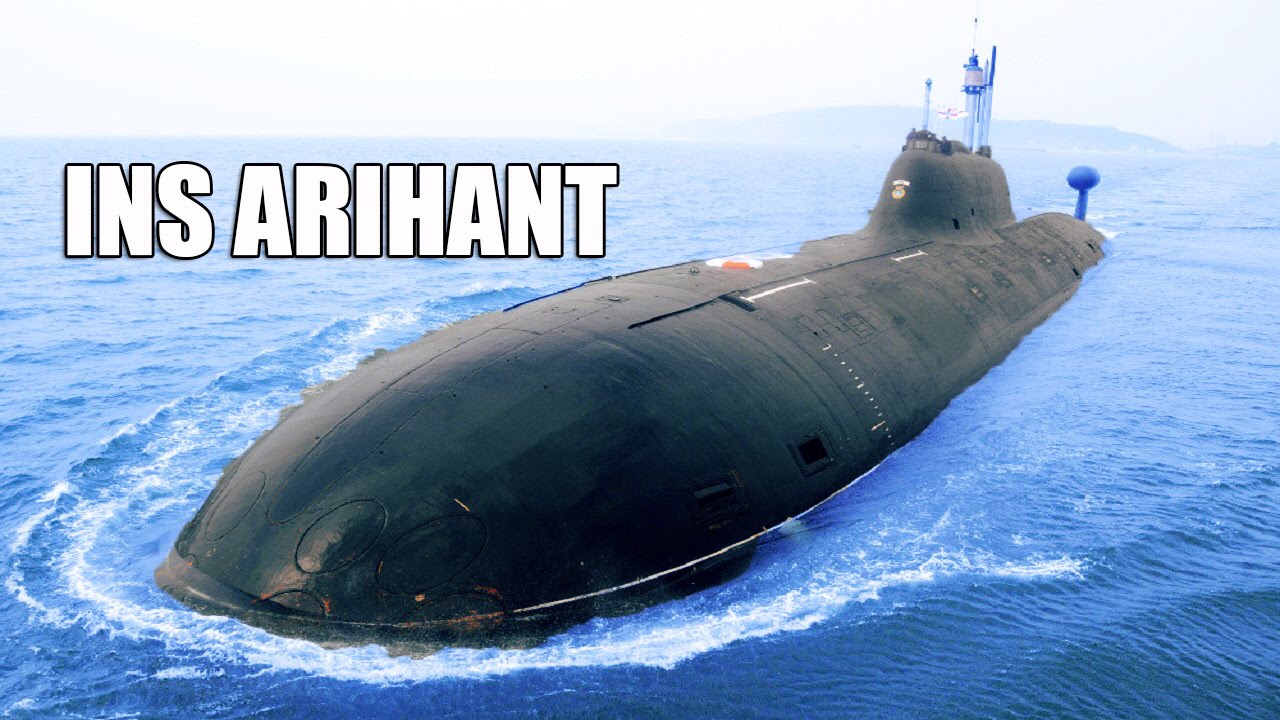 'India's nuclear submarine could trigger arms race'
'India's nuclear submarine could trigger arms race'By Aamir Latif and Islamuddin Sajid
KARACHI / ISLAMABAD, Pakistan
India earlier this week announced its first locally built nuclear-powered submarine had completed a patrol in the Indian Ocean -- a development that has the potential to escalate the nuclear arms race in the region.
In a congratulatory message to the nation, Indian Prime Minister Narendra Modi said the move has given New Delhi the capability to fire nuclear weapons from land, air and sea.
Contrary to conventional submarines, which run on diesel or electricity, nuclear-powered submarines do not need to surface frequently, can operate for long-periods of time underwater, and virtually need no refuelling.
India's arch-rival and neighbor Pakistan claimed that it was fully capable of meeting the challenges posed by the move.
"The development marks the first actual deployment of ready-to-fire nuclear warheads in South Asia which is a matter of concern not only for the Indian Ocean littoral states but also for the international community at large," Pakistan Foreign Ministry spokesman said in his weekly news briefing, state-owned Radio Pakistan reported.
Analysts in Pakistan view the Indian move one which could trigger a nuclear arms race in South Asia.
“The latest [Indian] move could trigger a nuclear arms escalation in South Asia, which will certainly not be a good sign for the entire international community,” Retired Lt. Gen. Talat Masood, an Islamabad-based security analyst told Anadolu Agency.
Masood, who served in the Pakistan army from 1951 to 1988, said that involvement of three nuclear powers in the region -- China, India, and Pakistan -- had already mounted a nuclear arms race.
"India feels insecure against China and to an extent Pakistan. It is on the one hand trying to match Beijing’s nuclear and missile capability, while on the other it wants to prove to the world that it is a robust nuclear power in the region,” he said.
Said Nazeer, another Islamabad-based security analyst, said China would not tolerate Indian rule in Indian Ocean.
“China is spending billions of dollars on CPEC (China Pakistan Economic Corridor) to get access to Pakistan’s Gwadar seaport, which it will use for business with the Middle East and Africa. Therefore, it would not bear any threats to this project," Nazeer said, referring to China's Belt and Road Initiative in Pakistan worth $64 billion.
Also, Nazeer added, the latest Indian move was direct threat to China in the Indian Ocean which Beijing was using for oil supply.
Samar Mubarik Mund, a Pakistani nuclear scientist who led the team that conducted six successful nuclear tests in May 1998, claims that Islamabad already possesses a “more effective and better” nuclear-powered submarine technology which it developed in 2017.
- Larger international implications
Analysts see a string of economic and political objectives of the big powers behind the latest surge in nuclear arms race in the region.
"The U.S. is supporting India in its nuclear pursuance to counter China, which is politically and economically challenging Washington," Masood said.
Similarly, he added, China wanted to see Pakistan as sufficient in terms of nuclear capability to counter India.
Nazeer shares a similar view.
“China knows that the U.S. is pushing India against it in the region. So in case of any misadventure against Pakistan, Beijing would stand besides Islamabad,” he said, citing several Indian moves foiled by China in the UN Security Council by using its veto in recent years.
China represents Pakistan’s largest defense partner, followed by the U.S. -- Islamabad’s ally in the war on terrorism. In July, Pakistan and China signed a multibillion-dollar deal by which Beijing will provide Pakistan’s navy with eight submarines.
Pakistan and India are among a small handful countries with nuclear arsenals. India joined the nuclear club long before Pakistan, in 1974, prompting Islamabad to follow suit.
Pakistan covertly developed its own nuclear capability in the 1980s, when it was an ally of the U.S. in the first Afghan war against the Soviet Union.
It did not conduct any nuclear tests, however, until India carried out a series of tests in 1999. Only three weeks later, Pakistan conducted six successful tests in the remote Chaghi district near the Afghanistan-Iran border, stoking fears of a nuclear war between the longtime rivals.
According to Sweden-based Stockholm International Peace Research Institute (SIPRI), India currently possesses 80-100 nuclear warheads, while Pakistan holds 90-110.
A number of international think tanks blame China for assisting Pakistan’s nuclear program, claiming that Islamabad’s nuclear arsenal will cross the 200-mark within the next five years.
No comments:
Post a Comment